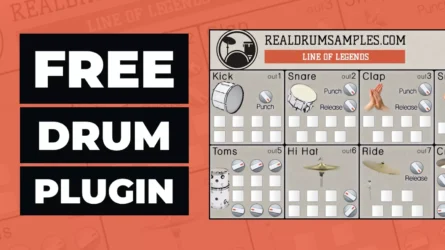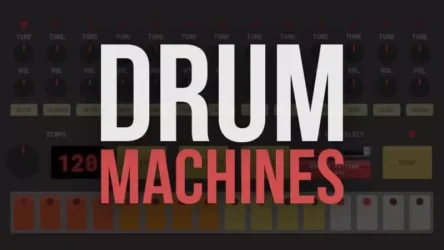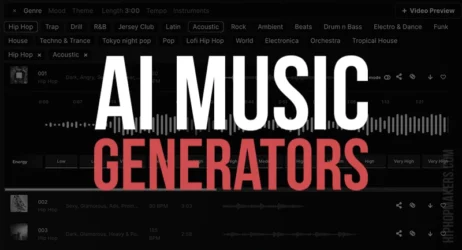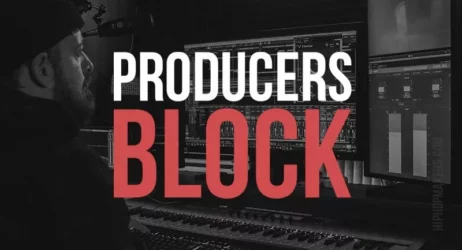This essential guide will answer what is EDM music, provide examples, share popular music instruments, tempos, and answer other common questions.
- What is EDM Music
- What Are Examples of EDM Music
- Common in EDM Music Instruments
- What Is the BPM of EDM Music
- Why Is EDM Hated?
- How Can I Make EDM Music
- History of Electronic Dance Music
- What Are EDM Festivals
- EDM Music Overview
What is EDM Music?
Electronic dance music or EDM is a term used to define a broad range of genres under a single label. It emerged in the late 1980s and peaked in 2010. EDM music is specifically created for dancing and raving purposes and is usually filled with adrenaline-pumping sounds with little to no lyrics.
EDM started to gain traction with the rise of club culture in the late 1980s and early 1990s. The United States of America pushed the term “EDM” to rebrand it as American Rave Culture.
Electronic music has various characteristics that define its features. The most easily recognizable trait is the inorganic sounds and beats made from audio samples or produced by specific EDM instruments like synthesizers and drum machines.
Related: 25 Free EDM VST Plugins For Electronic Dance Music
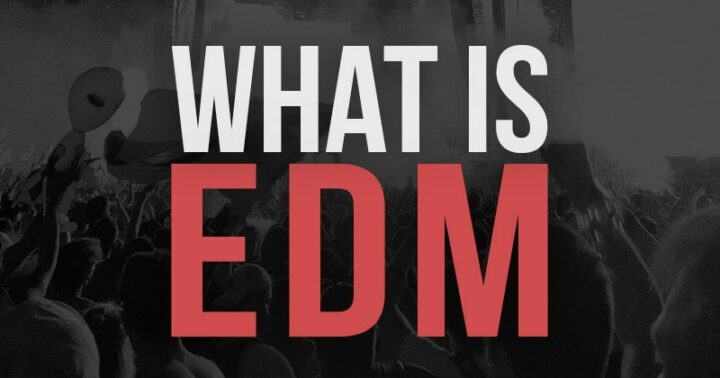
Another defining characteristic is the lack of lyrics in the track, if any at all. EDM music can contain some lyrics, but the sounds always take center stage in a song.
This method makes sure that listeners are focused on dancing to the beats instead of pondering over the words.
A strong feature of EDM music is its rhythm. The flow and vibe are crucial in eating it and are carefully orchestrated with a seamless continuation. EDM is designed to rally and excite the listener on the dance floor.
Therefore, the artist and DJs behind this industry formed a calculated fluctuation in a rhythm known as a “drop” or “beat drop”. Drop-in music means a point in time when the music track suddenly changes its rhythm or baseline.
It occurs after a build-up of tension and breaks when the beast is unleashed, releasing a fresh energy flow on the dance floor.
Related: Free EDM Samples & Sample Packs
The fan base of such music has become global. The mainstream artists and Hollywood have started to prominently include EDM music into their works due to its ever-expanding appeal, and it has become essential in the music world.
People often get confused about the difference between EDM, dubstep, and techno music when in reality, these all fall under the umbrella term of Electronic Dance Music.
EDM has a broad range of genres, with the most prominent of them being the following:
- Techno
- Dubstep
- Trance
- House Music
- Drum and Bass
EDM is also associated with electro-house, trance music, Detroit techno, disco, and more. Each of these genres has its respective sub-genres. EDM Music ranges from Beatles’ “ambient” music to 200 BPM ‘hardcore’ music.
Related: How to Make Electronic Music
What Are Examples of EDM Music?
EDM music is played all over the globe, and it is so reasonably common to hear them being played in several festivals and events.
We are listening to them without even realizing it. Here is a top ten list of EDM songs:
- Daft Punk– “Digital Love,” 2001
- Martin Garrix – “Animals,” 2013
- Daft Punk – “Get Lucky,” 2013
- Kygo – “Fire Stone,” 2014
- Avicii – “Wake Me Up,” 2013
- David Guetta & Sia – “Titanium,” 2011
- Major Lazer & DJ Snake – “Lean On” Ft. MO, 2015
- The Chainsmokers – “Closer,” 2016
- Darude – “Sandstorm,” 1999
- Alan Walker – “Faded,” 2015
These songs have garnered millions and millions of views on YouTube and sold tens of thousands of albums.
What Sounds & Instruments Are Common in EDM Music?
Various kinds of instruments are used to produce multiple sounds, and each of these serves its special kind of flavor in the music track. Artists and DJs have experimented with several types of instruments to help create enjoyable EDM songs.
The most stylized equipment is the Electric Guitar, a staple instrument in this industry, and its sounds are great to pair up with others.
It is now moving on to the basics of any EDM track, which is the beats and rhythm set out by Drum Machines and Pad Sets.
It is used to create thumping and banging sounds classified as beats, making the track easier to dance along to.
Plenty of instruments are used to give a high-frequency backdrop in a song, the most popular being the Saxophone.
It provides added flair to the music and a sense of classical music without adversely impacting the EDM genre.
The modern era of EDM has brought forward an instrument known as the sampler ( or drum machine ), and its function is to custom store different types of audio that a push of a designated button can play.
It is a perfect tool for remixing a song, enhancing it according to the musician’s unique flavor, and moving along to the essential instrument in this genre: Synthesizer and Keyboards.
Synthesizers are generally played with keyboards or controlled by sequencers, software, or other instruments. Its main job is to generate audio samples from numerous sources and synthesis them into something new.
These sounds may be shaped and modulated by components such as filters, envelopes, and low-frequency oscillators.
What Is the BPM of EDM Music? (Tempo)
BPM means Beats Per Minute, while Tempo means the speed at which the music is generally played.
Commonly the Tempo of an EDM is 126-132 BPM.
Tempo Ranges for Genres:
- Dub (60–90 bpm)
- Hip-hop (60–100 bpm)
- House (115–130 bpm)
- Techno/trance (120–140 bpm)
- Dubstep (135–145 bpm)
- Drum and bass (160–180 bpm)
Why Is EDM Hated?
EDM is often hated due to its reputation as “party music for troublemakers ingesting drugs.” EDM is mostly played in clubs and concerts where it is common to use mood-enhancer drugs and drink alcohol.
Thus, a close relation to addictive substances had given an uncertain outlook to EDM music listeners.
Furthermore, EDM is looked down upon because people believe it does not qualify to be called “real music.” Often, songs lack lyrics or depth, and naysayers treat it as the noise made by pressing buttons, so they don’t respect the artist behind the music.
Often upcoming musicians and DJs find quick fame with EDM music and can be as young as 17 years old like DJ Martin Garrix, when he became a world-class musician.
How Can I Make EDM Music?
Creating EDM music is not impossible, and it has become easier due to computers and mobile phone applications.
A short guide is as follows:
The basics of what is needed are software for all music production called a DAW, and it is a digital audio workstation and an important asset for production.
Software that runs on top of DAW is called PLUGINS, which helps with analog compression, sidechain compression, EQ, and reverb.
Next, you will need a MIDI controller, a type of software that helps communicate between instruments.
Another important ingredient is a good collection of SOUND LIBRARY, which is a collection of audio samples.
Finally, by using these along with an audio interface, you can create your EDM demo track.
What Is The History of Electronic Dance Music?
EDM started to gain popularity with the rise of club culture in the late 1980s and early 1990s. It grew after the rise of club culture, which includes Ravings, Party-Crews, and underground parties.
The United States of America had reluctance in accepting such culture except for New York City. Although Chicago house and electro music were influential in Europe and the USA, the mainstream media and record industry had a hostile attitude.
A close relation to drug substances had given an uncertain outlook to EDM music listeners. EDM was mostly played in clubs and concerts where it was common to pass mood and energy-enhancing drugs.
The correlation of EDM with drug culture bought the police to suspend raves.
Nevertheless, EDM immensely surged in popularity even after such labels.
To clean its older image, the term “EDM” was pushed by the United States of America’s music industry and press to rebrand it as American Rave Culture.
The music peaked in 2010 with the mainstream global media.
What Are EDM Festivals?
EDM festivals are mega-events conducted all over the globe. The primary purpose is to dance and party with an energetic crowd where everyone shares a similar taste in music and gathers around.
The following are some of the largest EDM festivals in the world:
- Burning Man – Black Rock City, Nevada
- Coachella – California, USA
- Creamfields – United Kingdom
- Sensation Festival – Amsterdam, Netherlands
- Sunburn Festival – India
- Tomorrowland – Belgium
Tomorrowland is the world’s largest EDM festival, and it flourished from 9000 attendees in 2005 to 400,000 attendees in 2019.
Tomorrowland debuted in the summer of 2005 in Boom, Belgium, and the celebration now lasts two weekends and commonly sells out in minutes.
The festival celebrated its fifteenth annual celebration from July 19 to 21 and from July 26 to 28 in 2019.
Eric Prydz, Armin van Buuren, Ummet Ozca, The Chainsmokers, Infected Mushroom, Carl Cox, David Guetta, Martin Garrix, Sam Feldt, Robin Schulz, Dannic, Axwell, Adam Beyer, and many more will perform at the festival.
The gigantic 2019 edition featured over 1000 artists on 18 stages spread across an enormous 38 hectares area
Electronic Music Overview
Electronic Dance Music, commonly known as EDM music, has made a big impact on the music industry. This umbrella term encompasses several music genres, from house music and techno music to trance and electro-house. As EDM artists, such as the popular American EDM artist and many early pioneers, began exploring electronic music, their unique musical styles resonated with fans worldwide.
Using electronic instruments like the early rhythm machine and the drum machine, artists crafted a dance sound that is futuristic yet deliberately inorganic. The techno producers, for instance, often preferred a harder, more mechanical sound. Meanwhile, popular EDM artists might lean into the uplifting melodies of progressive trance or the bass-heavy beats of trap music. With their own music, these artists can craft everything from deep house and progressive house to the hardcore rave sounds of acid house.
The EDM industry has seen great success, with Electronic Dance Music frequently topping the music charts. Record producers are continually working with EDM producers to help the genre gain mainstream success. At the same time, solo artists continue to make their own edits and release music live, expanding the reach and impact of this genre.
DJs play a pivotal role in the EDM scene, spinning records in clubs and at major festivals like the Ultra Music Festival and the Electric Daisy Carnival. A resident DJ, for instance, might keep the club life vibrant by playing a mix of EDM subgenres, while top EDM artists might be featured in popular Spotify playlists or recognized in publications like DJ Mag and Mix Magazine.
From the pulsating rhythms of disco music and the synth-pop melodies of the 80s to the future bass and club music of today, Electronic Dance Music remains a vibrant and evolving genre. Whether it’s the French songwriter spinning deep house or the techno artist dabbling in what some call ‘drug music,’ there’s no denying the popularity of EDM music. It continues to change and evolve, just like the EDM subgenre that falls under it, proving that the genre’s beat, like the beat of a drum machine, goes on.
I hope you found this information on EDM music helpful. I hope we successfully answered what is EDM music.

